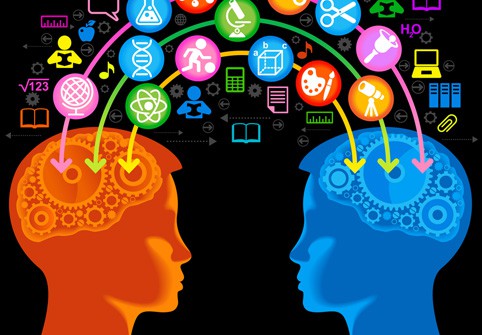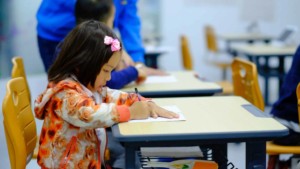What Will Elementary Look Like?

A couple months ago a friend asked, “What will the average elementary school look like in a few years?” She works for an adaptive learning company, so she’s got a pretty good view of the future but her question belies some skepticism that elementary schools will change much. I’ve been thinking about her question ever since.
Some leading thinkers have called the high school form factor obsolete. That’s less the case with elementary. In most communities 80-90% of families will remain interested in the academic and custodial services of their neighborhood public school.
However, with growing student and life circumstance diversity, there are some common practices–like grouping kids by birthday–that are becoming obsolete. The rapid uptake of adaptive assessment and instruction is creating valuable new learning experiences for students and driving discussions about competency-based progressions
My last blog about How to Create a Blended High School covered five foundational steps that apply equally to elementary schools: start with good goals, create a shared vision of powerful learning experiences, sweat the culture, measure what matters, ask students to wrestle with big questions.
After that, there are five decisions to make (as detailed in the Blended Learning Implementation Guide): build a strategy, adopt or adapt a school model, pick platform and content, blend your staffing plan, and pick a device–in that order.
To the question of “What will elementary schools look like a couple years from now,” I think we’ll see four significant changes.
1. More personalized learning and less whole group instruction. The use of adaptive instruction and learning games will become widespread in K-8. Social learning (on platforms like Edmodo) is already common in intermediate and middle grades.
Interventions for struggling readers and English language learners are improving rapidly and should be much more productive in a couple years.
2. High access environments will support more personalized and extended learning opportunities. High access environments will typically include school provided devices as well as student owned mobile devices. Tablets are quickly becoming the standard in primary grades while laptops and chromebooks are popular in middle grades.
The combination of the shift to digital and adoption of Common Core standards is leading to a rich app marketplace and a proliferation of open content and resources–in a couple years there will be more cool stuff for free!
3. Flexible grouping and less grouping by age. Most elementary students will spend part of the day in dynamic performance groups in reading and math. This will be aided by multi-age grade spans or by using a specialist model and more levels (e.g., Michigan’s EAA uses 18 levels in K-8 for ELA and math).
4. Students will more frequently show what they know and progress when they have demonstrated proficiency–and the flexible grouping strategies outlined above will make that feel like more time and support and not retention.
Schools will combine the assessment embedded in learning experiences (like games and adaptive systems) with external measures. Over time (i.e., in the next decade) competency-based systems will be sufficient, robust and widespread and there will be less reliance on heavyweight end of year tests.
Over the next three to five years, these four changes should result in a marked increase in the percentage of students prepared for secondary education.





0 Comments
Leave a Comment
Your email address will not be published. All fields are required.